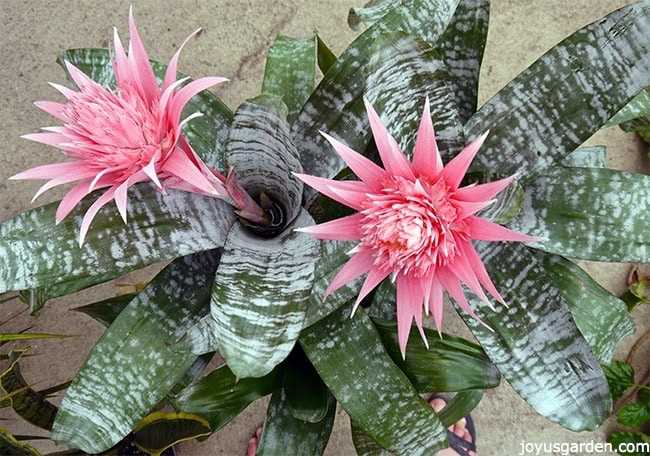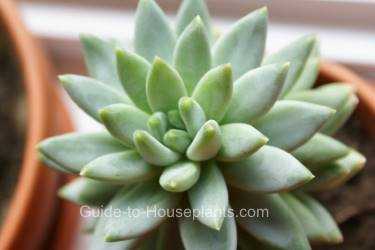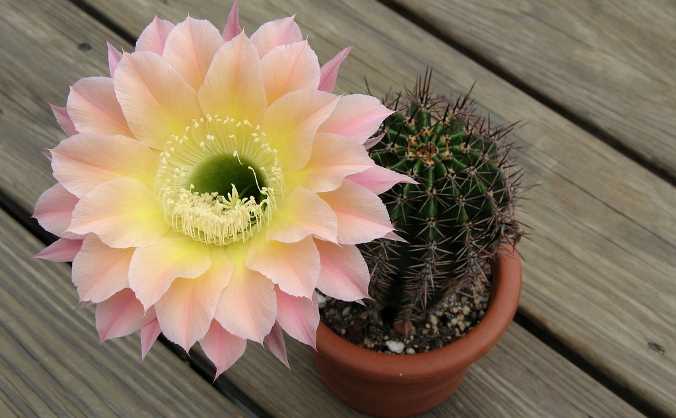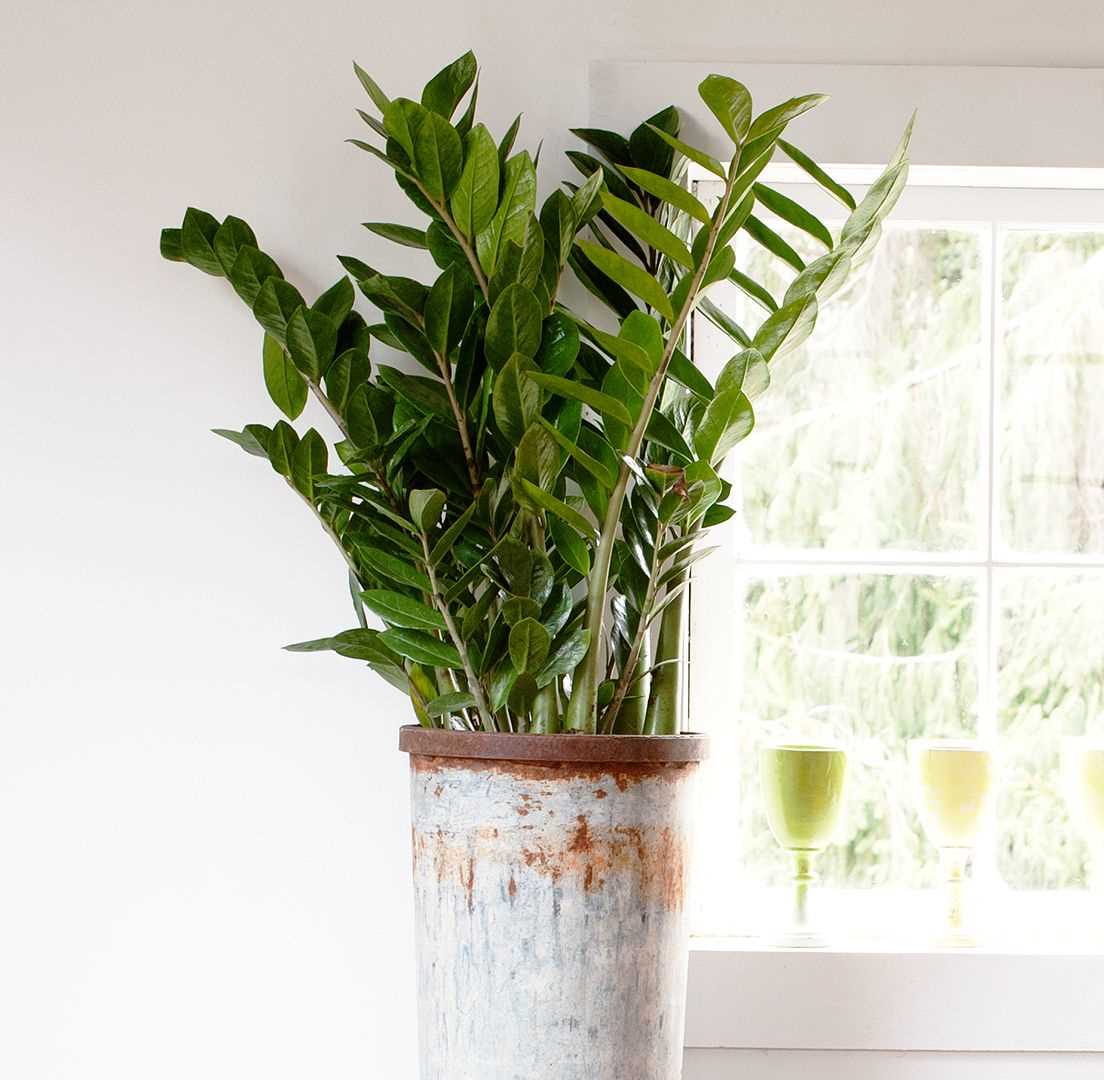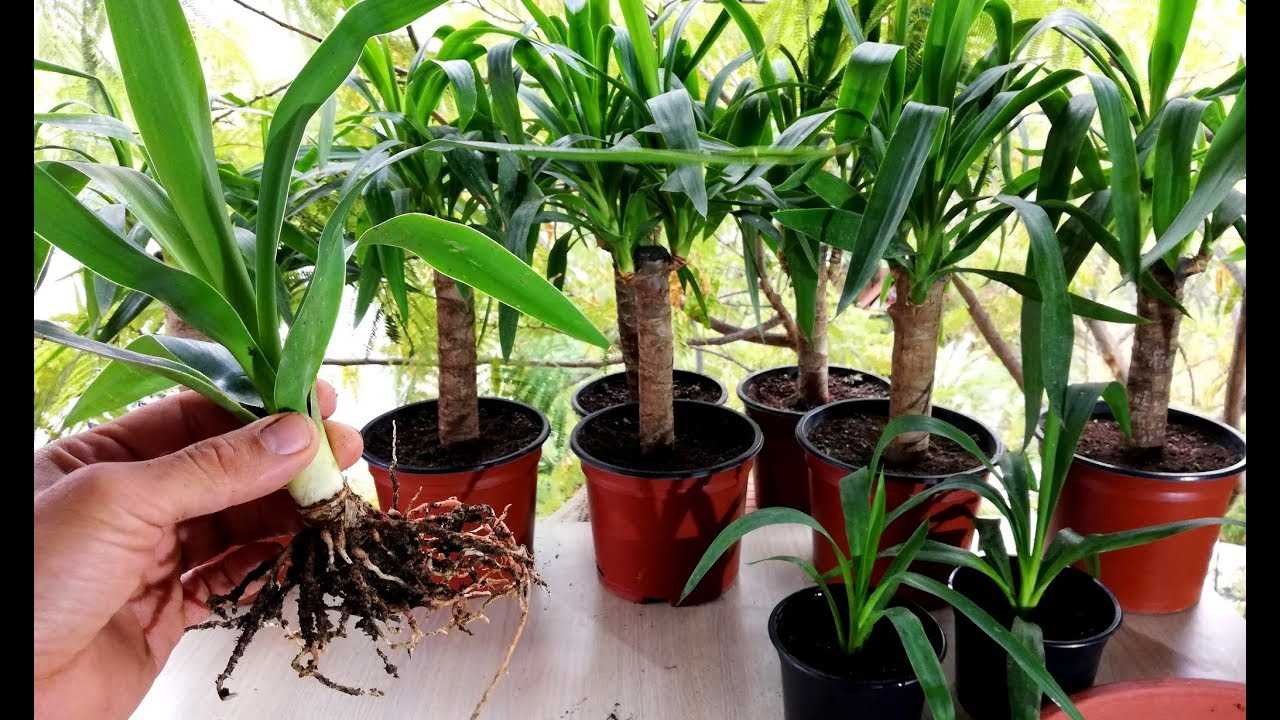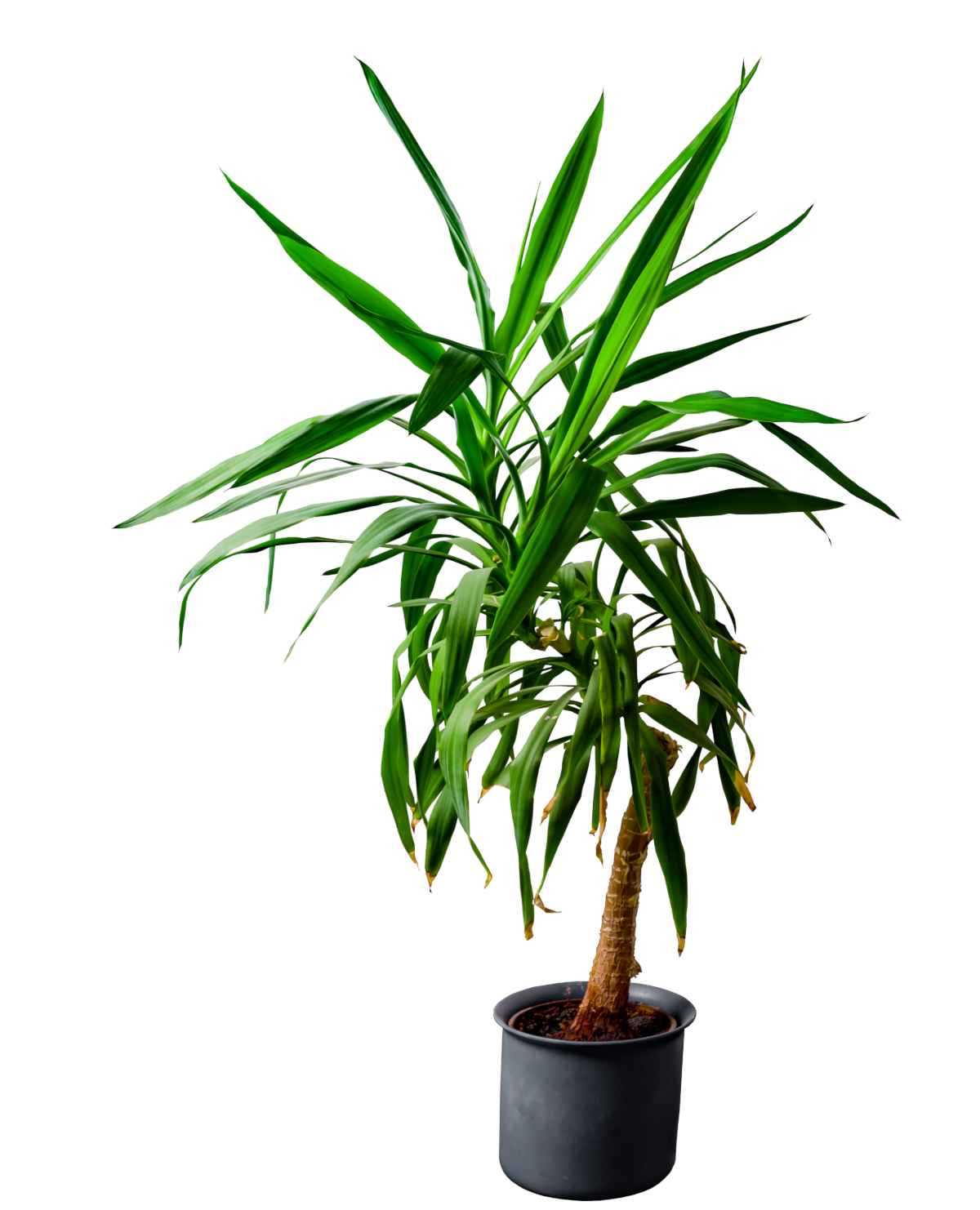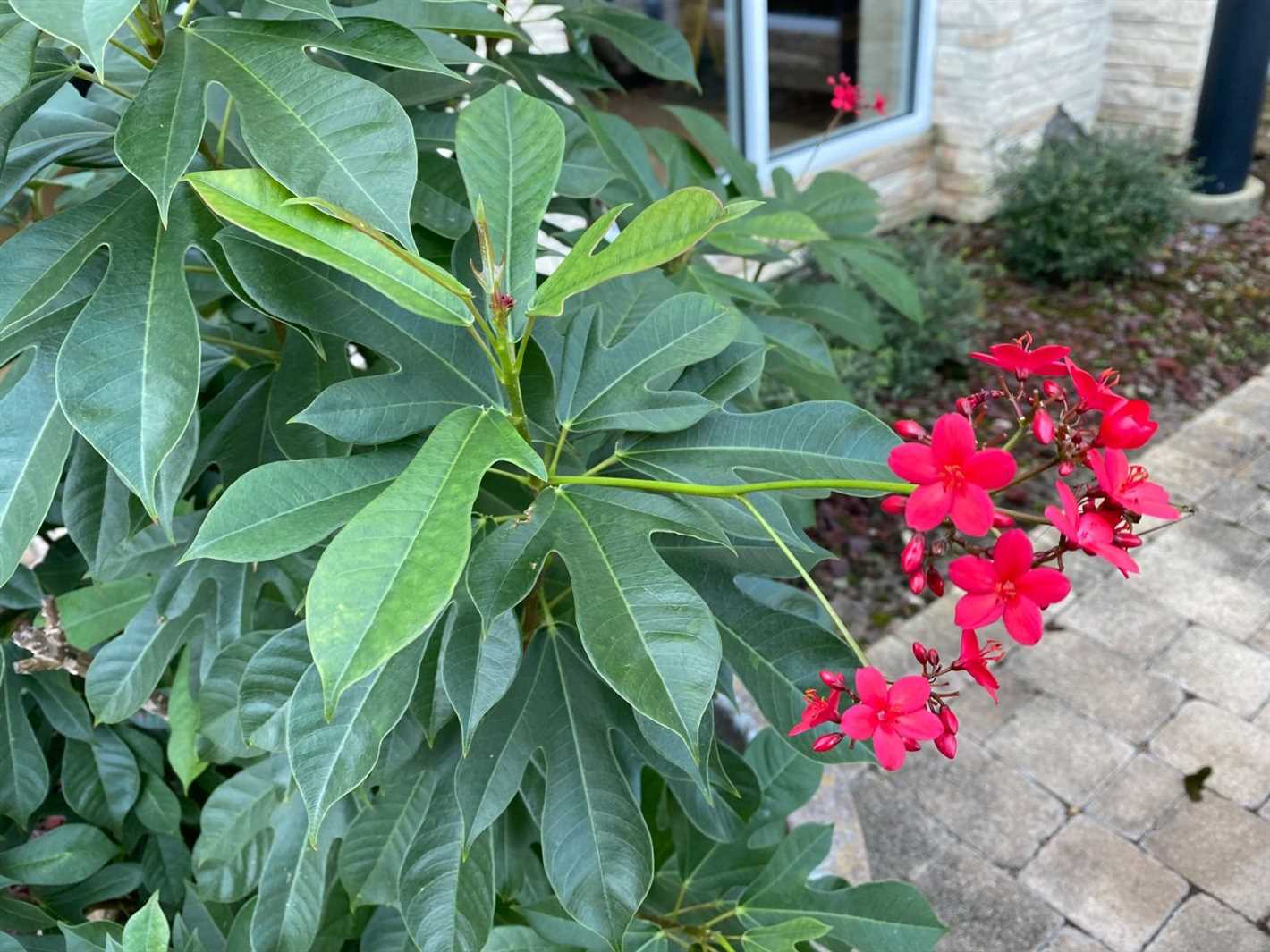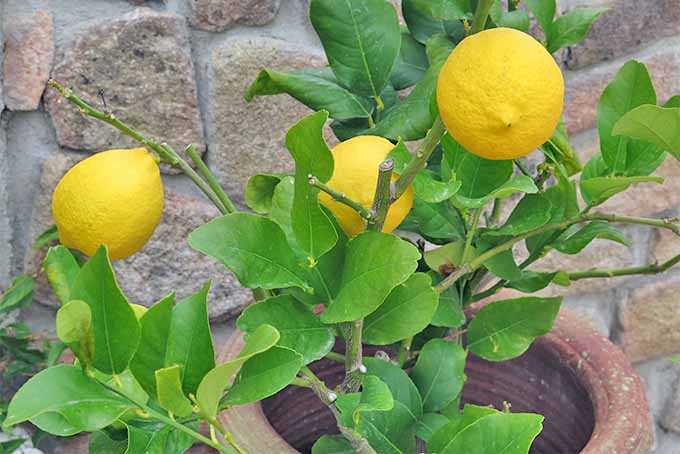- Understanding the Decabrista: A Unique Flowering Plant
- Origin and Habitat
- Appearance
- Flowering Process
- Propagation
- Conclusion
- Decabrista’s Ovary Drop: An Intriguing Phenomenon
- 1. What is ovary drop?
- 2. Reasons for ovary drop in Decabrista
- 3. Propagation and preventing ovary drop
- Conclusion
- Rare and Fascinating Propagation Methods
- 1. Air Layering
- 2. Grafting
- 3. Tissue Culture
- 4. Division
- 5. Bulb Scaling
- 6. Offset Propagation
- 7. Layering
- 8. Tissue Culture
- 9. Leaf Cuttings
- 10. Bulb Division
- Essential Factors for Successful Decabrista Propagation
- 1. Selection of Healthy Parent Plant:
- 2. Choosing the Right Soil:
- 3. Propagation by Stem Cuttings:
- 4. Providing Optimal Lighting:
- 5. Proper Watering Techniques:
- 6. Maintaining Adequate Humidity:
- 7. Fertilizing at the Right Time:
- 8. Protecting from Cold Temperatures:
- 9. Regular Pruning:
- 10. Monitoring for Pests and Diseases:
- Decabrista Care: Creating the Perfect Environment
- Temperature
- Lighting
- Watering
- Humidity
- Fertilizer
- Propagation
- Pests
- Pruning
- Repotting
- Conclusion
- Recognizing and Treating Common Decabrista Issues
- 1. Overwatering
- 2. Underwatering
- 3. Lack of Sunlight
- 4. Nutrient Deficiencies
- 5. Pests
- 6. Lack of Proper Air Circulation
- 7. Temperature and Humidity Fluctuations
- Decabrista and Its Role in Indoor Gardening
- Benefits of Decabrista in Indoor Gardening
- Tips for Successful Decabrista Care
- Conclusion
- Decabrista’s Place in Floral Arrangements and Landscapes
- Floral Arrangements
- Landscapes
- Tips for Using Decabristas
- The Growing Popularity of Decabrista: From Hobbyists to Collectors
- Q&A:
- Why does the Decabrista drop its ovary?
- How can I successfully propagate the Decabrista flower?
- What is the best time of the year to propagate the Decabrista flower?
- Can I propagate the Decabrista flower from seeds?
- What are some common problems that can occur when propagating the Decabrista flower?
- How long does it take for a propagated Decabrista flower to start blooming?
- Video: BRCA Mutations and Ovarian Cancer: What You Need to Know
The Decabrista, also known as Schlumbergera, is a popular flowering plant cherished for its vibrant and exotic blooms. It is native to the tropical rainforests of Brazil and belongs to the family Cactaceae. One intriguing characteristic of the Decabrista is its tendency to drop its ovary, causing concern among gardeners. In this article, we will explore the reasons behind this behavior and provide helpful tips on how to successfully propagate this unique flower.
One possible explanation for the Decabrista’s habit of dropping its ovary is its natural adaptation to the forest environment. In the wild, the plant grows on the branches of trees, where it receives filtered sunlight and moisture from rainwater runoff. Dropping the ovary may be a strategy to conserve energy and resources, allowing the plant to focus on new growth instead of investing in fruit production. Understanding this natural behavior can help gardeners better care for their Decabrista plants.
Another factor that can contribute to ovary drop in Decabristas is improper care. This delicate plant requires specific conditions to thrive and reproduce successfully. Inadequate watering, extreme temperatures, and lack of humidity can all stress the plant and lead to the dropping of the ovary. To prevent this, it is crucial to provide the Decabrista with well-draining soil, regular watering, and a consistent temperature and humidity level.
TIP: To mimic the Decabrista’s natural habitat, consider placing the plant in a hanging basket or on a moss-covered log. This will help recreate the forest environment it prefers and reduce the risk of ovary drop.
When it comes to propagating the Decabrista, there are several methods to choose from. One common technique is stem cuttings, where a healthy stem segment is removed and allowed to root in a moist growing medium. Another method involves collecting the dropped ovaries and carefully planting them in a suitable substrate. Patience and attention to detail are essential in both cases, as the Decabrista can be sensitive to transplantation and require time to establish new roots.
In conclusion, the Decabrista’s habit of dropping its ovary is a fascinating adaptation to its forest environment. By understanding the reasons behind this behavior and providing proper care, gardeners can enjoy the beauty of this unique flower. Whether through stem cuttings or utilizing dropped ovaries, propagating the Decabrista can be a rewarding experience that allows for the cultivation of more of these stunning plants.
Understanding the Decabrista: A Unique Flowering Plant
The Decabrista, also known as the Christmas Cactus or Schlumbergera, is a remarkable flowering plant that is native to the rainforests of Brazil. It belongs to the family Cactaceae and is famous for its beautiful flowers that bloom during the Christmas season. In this article, we will explore the unique characteristics of the Decabrista and discuss its reproductive process.
Origin and Habitat
The Decabrista is indigenous to the coastal mountains of southeastern Brazil. It is specifically adapted to the humid and shady conditions of the rainforests, where it grows as an epiphyte, attaching itself to trees or rocks. This unique habitat allows the Decabrista to thrive in low-light environments and absorb nutrients from the air and rainwater.
Appearance
The Decabrista has flat, succulent stems that are composed of several segments, giving it a leaf-like appearance. The stem segments, also known as cladodes, are connected to each other and form a cascading or drooping structure. The plant can grow up to 30-60 centimeters in height, with each segment measuring around 5-7 centimeters long.
Flowering Process
The Decabrista is famous for its vibrant and eye-catching flowers that bloom during the Christmas season, hence its common name. The flower buds usually form at the tips of the stem segments and undergo a unique drop and hang process. As the buds develop, they become heavy and eventually drop down, hanging from the plant like Christmas ornaments.
The Decabrista flowers come in a variety of colors, including shades of pink, red, purple, orange, and white. The flowers have long, tubular petals that are slightly curved, giving them a graceful and elegant appearance. These bright and colorful blooms can last for several weeks and are a popular choice for Christmas decorations and floral arrangements.
Propagation
Understanding how to successfully propagate the Decabrista can be a rewarding and enjoyable experience for plant enthusiasts. One common method of propagation is through stem cuttings. Simply select a healthy stem segment and cut it at the joint using a clean, sharp knife or scissors. Allow the cut end to dry for a few days before placing it in a well-draining potting mix.
Another technique is by collecting the seeds produced by the Decabrista flowers. Remove the dried flower heads and separate the tiny seeds from the plant material. Sow the seeds in a well-draining soil mixture and keep them moist until germination occurs. This method requires patience, as it usually takes several weeks for the seeds to sprout.
Conclusion
The Decabrista is a truly remarkable flowering plant with its unique appearance and captivating blooming process. Whether you are interested in its reproductive process or simply appreciate its beauty, the Decabrista is a stunning addition to any indoor garden or floral arrangement. By understanding its origin, habitat, appearance, and propagation methods, you can enjoy the beauty of this plant and successfully grow it in your own home.
Decabrista’s Ovary Drop: An Intriguing Phenomenon
The Decabrista flower, also known as the Christmas cactus or Schlumbergera, is a fascinating plant known for its unique ability to drop its ovary. This intriguing phenomenon has puzzled botanists and enthusiasts for years, and understanding why it happens is crucial for successful propagation of this beautiful flower.
1. What is ovary drop?
Ovary drop, also referred to as flower bud drop or floral abortion, occurs when the ovary of the Decabrista flower falls off before it can develop into a fruit. This drop usually happens during the early stages of flower development. While it may seem like a drawback, ovary drop is a natural process that the Decabrista undergoes for various reasons.
2. Reasons for ovary drop in Decabrista
There are several factors that contribute to ovary drop in Decabrista flowers:
- Temperature fluctuations: Decabrista is sensitive to temperature changes, and sudden drops or spikes can cause ovary drop. It is essential to keep the plant in a stable environment to prevent this from happening.
- Inadequate pollination: If the Decabrista flower is not successfully pollinated, it may drop its ovary. Adequate pollination can be achieved by providing the right conditions for pollinating insects or manually pollinating the flowers.
- Nutrient deficiencies: Lack of essential nutrients, such as phosphorus or potassium, can lead to ovary drop. It is crucial to provide the Decabrista with a well-balanced fertilizer to prevent deficiencies.
- Watering issues: Overwatering or underwatering can cause stress to the Decabrista plant, leading to ovary drop. Maintaining proper watering practices is essential for ensuring the health of the flower.
3. Propagation and preventing ovary drop
Propagation of Decabrista can be achieved through various methods, including stem cuttings and seed propagation. To prevent ovary drop during propagation, it is important to create an optimal environment for the new plants:
- Temperature control: Maintaining a stable temperature is crucial for successful propagation. Avoid exposing the new plants to extreme temperature fluctuations.
- Proper pollination: If using pollination to propagate, ensure proper pollination techniques are employed to prevent ovary drop.
- Provide adequate nutrients: Use a well-balanced fertilizer to provide the new plants with the necessary nutrients for healthy growth.
- Watering management: Follow proper watering practices to prevent stress on the new plants and reduce the chances of ovary drop.
Conclusion
Understanding the phenomenon of ovary drop in Decabrista flowers is essential for successfully propagating these beautiful plants. Temperature fluctuations, inadequate pollination, nutrient deficiencies, and watering issues can all contribute to ovary drop. By creating an optimal environment and providing the necessary care, enthusiasts can effectively propagate Decabrista and enjoy their vibrant blooms.
Rare and Fascinating Propagation Methods
1. Air Layering
Air layering is a unique propagation method that involves creating a new plant from a branch still attached to the parent plant. This is done by wrapping a section of the branch in moist sphagnum moss and covering it with a plastic or foil wrapping. The branch is then left to develop roots, and once strong roots have formed, it can be separated from the parent plant and potted on its own.
2. Grafting
Grafting is a method of propagation where two plants are combined to create a new plant with the desirable characteristics of both. This technique involves joining the stem of one plant, known as the scion, to the rootstock of another plant. It requires precision and skill to ensure a successful union, but when done correctly, grafting can produce unique and interesting specimens.
3. Tissue Culture
Tissue culture is a laboratory-based propagation technique that involves growing plant cells in a nutrient-rich medium under controlled conditions. This method allows for the rapid multiplication of plants, even those that are difficult or slow to propagate through traditional methods. It is commonly used for rare and endangered plants and allows for the production of large numbers of identical plants.
4. Division
Division is a propagation method that involves splitting a mature plant into multiple sections, each of which can grow into a new plant. This method is commonly used for plants that naturally produce multiple crowns or clumps, such as hostas or ornamental grasses. Division is a relatively simple and reliable method, making it ideal for beginners or when a large number of plants are desired.
5. Bulb Scaling
Bulb scaling is a propagation method specifically used for plants that produce bulbs or corms. It involves removing scales or bulblets from the parent bulb and planting them individually. These scales or bulblets will develop into new bulbs over time. This method allows for the production of large numbers of plants from a single bulb and is commonly used for plants like lilies or dahlias.
6. Offset Propagation
Offset propagation is a method commonly used for plants that naturally produce offsets or small plantlets that grow alongside the parent plant. These offsets can be separated and replanted to create new plants. This method is relatively easy and is often used for succulents, such as aloe vera or hens and chicks.
7. Layering
Layering is a propagation method where a branch or stem of a plant is encouraged to produce roots while still attached to the parent plant. This is done by bending a flexible stem or branch to the ground and covering a portion of it with soil or a growing medium. Once roots have developed, the new plant can be separated from the parent and potted on its own. Layering is commonly used for plants like roses or rhododendrons.
8. Tissue Culture
Tissue culture is a laboratory-based propagation technique that involves growing plant cells in a nutrient-rich medium under controlled conditions. This method allows for the rapid multiplication of plants, even those that are difficult or slow to propagate through traditional methods. It is commonly used for rare and endangered plants and allows for the production of large numbers of identical plants.
9. Leaf Cuttings
Leaf cuttings are a unique propagation method where a leaf or part of a leaf is used to create a new plant. This is commonly done by taking a leaf cutting and placing it in a growing medium. Under the right conditions, the cutting will develop roots and a new plant will grow. This method is commonly used for plants such as African violets or jade plants.
10. Bulb Division
Bulb division is a method specifically used for plants that produce bulbs or corms. It involves dividing the parent bulb into smaller sections, each of which can grow into a new plant. This method is commonly used for plants like daffodils or gladiolus and is a reliable way to increase the number of bulbs in a garden.
Essential Factors for Successful Decabrista Propagation
1. Selection of Healthy Parent Plant:
The first step in successful Decabrista propagation is to select a healthy parent plant. Look for a plant that is disease-free, has strong stems, and lush green foliage. Avoid plants with signs of pests or diseases, as they can hinder successful propagation.
2. Choosing the Right Soil:
Decabrista plants require well-draining soil that is rich in organic matter. Use a mix of peat moss, perlite, and sand to create an ideal growing medium for your plants. This will ensure that the roots receive proper aeration and prevent waterlogging, which can lead to root rot.
3. Propagation by Stem Cuttings:
One of the most common methods of propagating Decabrista is through stem cuttings. Select a healthy stem of the parent plant and cut it just below a leaf node. Remove the lower leaves to expose a node, and dip the cut end in rooting hormone powder to encourage root development.
4. Providing Optimal Lighting:
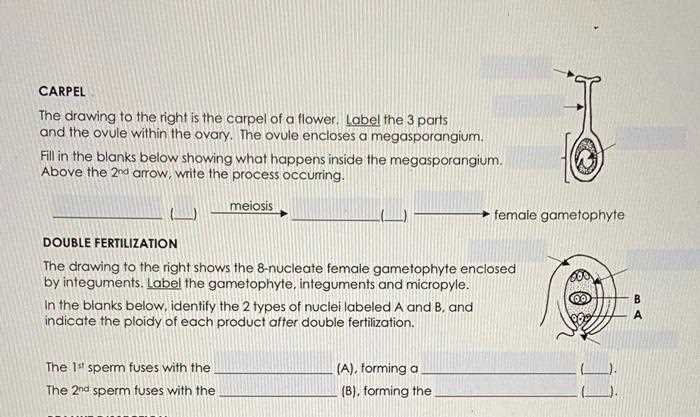
Decabrista plants prefer bright, indirect light, but they can tolerate some direct sunlight in the morning or evening. Place your propagated cuttings in a location where they will receive at least 4-6 hours of indirect sunlight per day. Avoid exposing them to intense afternoon sun, as it can scorch the leaves.
5. Proper Watering Techniques:
Decabrista plants require regular watering, but overwatering can be detrimental to their health. Water the plants when the top inch of soil feels dry to the touch. Ensure that the excess water drains out of the pot to prevent waterlogging. Avoid wetting the leaves to minimize the risk of fungal diseases.
6. Maintaining Adequate Humidity:
Decabrista plants thrive in humid conditions. To provide sufficient humidity, you can place the propagated cuttings on a tray filled with water and pebbles. Alternatively, you can use a humidifier or place the plants in a bathroom or kitchen where the humidity levels are naturally higher.
7. Fertilizing at the Right Time:
Regular fertilization is essential for the healthy growth of Decabrista plants. Use a balanced, water-soluble fertilizer with a ratio of 20-20-20 or 10-10-10. Feed the plants every 2-4 weeks during the growing season (spring and summer) and reduce the frequency during the dormant period (fall and winter).
8. Protecting from Cold Temperatures:
Decabrista plants are sensitive to cold temperatures and can suffer damage if exposed to frost or freezing temperatures. During the winter months, keep the plants away from cold drafts and provide additional protection, such as moving them indoors or covering them with frost cloth or a light blanket.
9. Regular Pruning:
To encourage bushier growth and prevent leggy stems, regular pruning is necessary. Pinch back the growing tips of the plant to promote the growth of side branches. Pruning also helps maintain the plant’s shape and prevents it from becoming too leggy or overcrowded.
10. Monitoring for Pests and Diseases:
Keep a close eye on your Decabrista plants for any signs of pests or diseases. Common pests that can affect these plants include mealybugs, aphids, and spider mites. If you notice any signs of infestation or disease, take immediate action to prevent the issue from spreading to other plants.
By following these essential factors for successful Decabrista propagation, you can enjoy a healthy and thriving collection of these beautiful flowering plants in your garden or indoors.
Decabrista Care: Creating the Perfect Environment
Temperature
The Decabrista thrives in temperatures between 70°F to 80°F (21°C to 27°C). It is important to maintain a stable temperature, as drastic fluctuations can cause the leaves to drop or prevent the flower from blooming.
Lighting
The Decabrista prefers bright, indirect light. A north-facing window or a spot away from direct sunlight is ideal. Excessive sunlight can scorch the leaves, while insufficient light can prevent proper growth and blooming.
Watering
Watering the Decabrista can be a bit trickier than other plants. It is recommended to water the plant when the top inch (2.5 cm) of the soil feels dry to the touch. Be cautious not to over-water, as the plant is susceptible to root rot. Drain any excess water from the saucer to prevent waterlogged soil.
Humidity
The Decabrista thrives in humid environments. To increase humidity, you can place the plant on a tray filled with pebbles and water, making sure the plant does not come into direct contact with the water. Alternatively, you can use a humidifier or mist the leaves regularly.
Fertilizer
During the growing season, which is typically from spring to early fall, fertilize the Decabrista every two weeks with a balanced, water-soluble fertilizer. Dilute the fertilizer to half of the recommended strength to prevent burning the plant’s roots.
Propagation
The Decabrista can be propagated by stem cuttings. Allow the cut end of the stem to callus for a few days before planting in well-draining soil. Keep the soil lightly moist and provide bright, indirect light. Roots should start to develop within a few weeks.
Pests
Inspect the Decabrista regularly for common houseplant pests such as spider mites and mealybugs. If these pests are detected, treat the plant with an appropriate insecticide or use natural remedies such as neem oil or a mixture of mild soap and water.
Pruning
Pruning is not typically necessary for the Decabrista. However, if you notice any dead or discolored stems or leaves, you can trim them off using clean pruning shears.
Repotting
The Decabrista prefers to be slightly root-bound, so repotting is usually only necessary every 2-3 years. When repotting, use a well-draining potting mix and a slightly larger pot. Avoid over-potting, as this can result in waterlogged soil.
Conclusion
By creating the perfect environment for your Decabrista, you can ensure the health and vitality of this beautiful flowering plant. Remember to monitor the temperature, provide adequate lighting, water properly, maintain high humidity, fertilize regularly, and address any pests or pruning needs. With proper care, your Decabrista will thrive and reward you with stunning blooms.
Recognizing and Treating Common Decabrista Issues
1. Overwatering
Overwatering is a common issue that can cause root rot and other problems in Decabrista plants. You can recognize overwatering if you notice yellow or wilting leaves, soft or mushy stems, or a foul smell coming from the potting soil.
To treat overwatering, allow the soil to dry out completely before watering again. Adjust your watering schedule and make sure the pot has proper drainage to prevent water from pooling at the bottom.
2. Underwatering
Underwatering can also cause issues for Decabrista plants. Signs of underwatering include dry, shriveled leaves and stems, as well as a general wilting appearance.
To treat underwatering, thoroughly water the plant until water drains out of the bottom of the pot. Check the soil periodically and water when the top inch feels dry to the touch.
3. Lack of Sunlight
Decabrista plants thrive in bright indirect light. If your plant is not receiving enough sunlight, you may notice pale or yellowing leaves, leggy growth, or a lack of flowering.
To address a lack of sunlight, move the plant to a brighter location, but avoid placing it in direct sunlight as it can scorch the leaves. A north or east-facing window is usually a good choice.
4. Nutrient Deficiencies
If the leaves of your Decabrista plant are pale or have yellow spots, it may be a sign of nutrient deficiencies. Specifically, nitrogen, phosphorus, and potassium deficiencies are common.
To treat nutrient deficiencies, you can use a balanced fertilizer designed for houseplants. Follow the instructions on the fertilizer packaging for application rates and frequencies.
5. Pests
Common pests that can affect Decabrista plants include spider mites, mealybugs, and scale insects. If you notice tiny webs, white cottony masses, or small brown bumps on the leaves or stems, your plant may be infested.
To treat pests, you can try manually removing them with a cotton swab dipped in rubbing alcohol. For more severe infestations, you may need to use insecticidal soap or a horticultural oil spray.
6. Lack of Proper Air Circulation
Improper air circulation can lead to a buildup of moisture, which can make Decabrista plants more prone to diseases and fungal issues. Signs of poor air circulation include moldy or discolored leaves, as well as a general decline in plant health.
To improve air circulation, you can place a small fan near the plant or ensure that it is not placed too close to walls or other obstacles that block airflow.
7. Temperature and Humidity Fluctuations
Decabrista plants prefer temperatures between 60-80°F (15-27°C) and high humidity levels. Extreme temperature fluctuations and low humidity can stress the plant and lead to leaf drop and poor growth.
To provide the optimal conditions, keep the plant away from drafts and heating vents. You can also increase humidity by placing a tray of water near the plant or using a humidifier.
Decabrista and Its Role in Indoor Gardening
Decabrista, also known as Christmas Cactus or Schlumbergera, is a popular plant in indoor gardening due to its vibrant flowers and low maintenance requirements. This article explores the role of Decabrista in indoor gardening and provides tips on how to care for this beautiful plant.
Benefits of Decabrista in Indoor Gardening
- Enhances the aesthetic appeal of indoor spaces with its colorful and unique flowers.
- Thrives well in low-light conditions, making it suitable for indoor environments.
- Requires minimal care and can tolerate neglect, making it an ideal choice for busy individuals.
- Produces beautiful blooms during the winter holiday season, adding a festive touch to indoor décor.
- Helps improve indoor air quality by filtering out pollutants and releasing oxygen.
Tips for Successful Decabrista Care

- Light: Place your Decabrista in a well-lit area away from direct sunlight. Indirect, bright light is ideal for its growth.
- Temperature: Maintain a temperature range between 60-70 degrees Fahrenheit (15-21 degrees Celsius). Avoid extreme temperature fluctuations.
- Watering: Water your Decabrista thoroughly when the top inch of soil feels dry to the touch. Do not overwater as it can lead to root rot.
- Humidity: Decabrista prefers moderate humidity levels. Mist the leaves occasionally or place the plant on a tray filled with water and pebbles to increase humidity.
- Fertilization: Feed your Decabrista with a balanced, water-soluble fertilizer once a month during the growing season (spring and summer).
- Propagation: Propagate Decabrista by taking stem cuttings and placing them in a well-draining potting mix. Ensure the cuttings have calloused before planting.
Conclusion
Decabrista is a versatile and beautiful plant that adds a pop of color to any indoor space. Its low maintenance requirements make it an excellent choice for indoor gardening enthusiasts of all skill levels. By providing the right conditions and care, you can enjoy the vibrant blooms of Decabrista year after year in your home.
Decabrista’s Place in Floral Arrangements and Landscapes

The Decabrista, also known as the Christmas cactus, is a popular choice for floral arrangements and landscaping due to its unique blooming habits and colorful flowers. Its trailing nature and ability to adapt to different environments make it a versatile plant for both indoor and outdoor settings.
Floral Arrangements
Decabristas are often used in floral arrangements due to their long-lasting blooms and attractive appearance. They can be used as a stand-alone plant in a vase or mixed with other flowers to create a colorful and eye-catching bouquet. The vibrant flowers of the Decabrista are available in various shades of pink, red, white, and purple, allowing for endless design possibilities.
When using Decabristas in floral arrangements, it is important to consider their unique blooming cycle. These plants bloom during the winter months, making them a popular choice for Christmas and holiday-themed arrangements. However, with proper care, Decabristas can be encouraged to bloom at other times of the year, providing a burst of color to any arrangement.
Landscapes
Decabristas can also be used in landscape design to add a touch of beauty and color to outdoor spaces. Their trailing habit and ability to grow in hanging baskets or along the ground make them an excellent choice for cascading displays or ground cover in gardens and landscapes.
One of the unique characteristics of Decabristas is their ability to thrive in both shady and partially sunny areas, making them a versatile option for various garden settings. They can be planted in flower beds, rock gardens, or even in containers on patios or balconies.
Decabristas are drought-tolerant plants, which makes them a great choice for low-maintenance landscapes. They do well in well-draining soil and require minimal watering, making them suitable for xeriscapes or areas with limited water resources.
Tips for Using Decabristas
Here are some tips for successfully using Decabristas in floral arrangements and landscapes:
- Choose healthy plants with open buds or flowers for floral arrangements.
- Provide the plants with the right amount of light and water to encourage blooming.
- Prune the plants after blooming to maintain their shape and promote healthy growth.
- Consider using Decabristas in combination with other plants that have similar light and water requirements for landscape design.
- Protect the plants from frost and extreme temperatures, as they prefer moderate conditions.
- Experiment with different colors and arrangements to create unique floral displays or landscapes.
Overall, the Decabrista is a versatile plant that can be used in various floral arrangements and landscaping projects. Its stunning blooms, trailing habit, and ability to adapt to different growing conditions make it a popular choice among gardeners and florists alike.
The Growing Popularity of Decabrista: From Hobbyists to Collectors
Decabrista, also known as the Christmas Cactus or Schlumbergera, is a popular houseplant that has gained a significant following among plant enthusiasts. Originally native to the coastal mountains of Brazil, this unique plant has become a favorite among hobbyists and collectors alike.
One of the main reasons for the growing popularity of the Decabrista is its striking appearance. The plant features flat, segmented leaves that are either green or reddish in color. During the holiday season, it produces vibrant and eye-catching flowers in shades of red, pink, and white. The contrast between the bright flowers and the dark green leaves creates a stunning display that instantly draws attention.
Another factor contributing to the plant’s popularity is its relatively low maintenance requirements. Decabrista is a tropical cactus that prefers bright but indirect light and moderate watering. It thrives in temperatures between 60 and 70 degrees Fahrenheit (15-20 degrees Celsius) and can tolerate lower humidity levels. These characteristics make it an ideal houseplant for both experienced gardeners and beginners.
Furthermore, Decabrista’s ability to propagate easily has made it a favorite among plant collectors. The plant can be propagated through stem cuttings, which can then be rooted in water or directly in soil. This allows enthusiasts to expand their collection and share the beauty of the Decabrista with others.
The growing popularity of Decabrista has led to an increase in the availability of different varieties and hybrids. Breeders have introduced variations with different flower colors, patterns, and sizes, making it even more appealing to collectors who love to have a diverse range of plants in their collection.
In addition to the visual appeal and ease of propagation, the Decabrista also has a rich history and cultural significance. It is often associated with the holiday season and is a common gift during the Christmas period. The plant’s ability to bloom during this time of year has added to its allure and made it a symbol of joy and celebration.
In conclusion, the Decabrista has seen a surge in popularity, from hobbyists who appreciate its beauty and ease of care to collectors who enjoy its vast array of varieties. Its striking appearance, low maintenance requirements, and cultural significance have all contributed to its rise as a beloved houseplant.
Q&A:
Why does the Decabrista drop its ovary?
The Decabrista drops its ovary as part of a survival mechanism. When the ovary drops, it reduces the energy required for seed production, allowing the plant to focus its resources on other survival mechanisms, such as producing new shoots and leaves.
How can I successfully propagate the Decabrista flower?
To successfully propagate the Decabrista flower, you can take stem cuttings and root them in a well-draining soil mix. Make sure the cutting has at least two joint segments and allow the cut end to callus over before planting. Keep the newly planted cutting in a warm and humid environment and water it sparingly until roots start to form.
What is the best time of the year to propagate the Decabrista flower?
The best time to propagate the Decabrista flower is in the spring or early summer when the plant is actively growing. This is when the plant has the most energy and is more likely to successfully root and establish itself.
Can I propagate the Decabrista flower from seeds?
While it is possible to propagate the Decabrista flower from seeds, it can be more challenging and time-consuming. The seeds need specific conditions to germinate, such as a warm and humid environment. Additionally, it can take several years for the plant to reach maturity and start flowering from seed.
What are some common problems that can occur when propagating the Decabrista flower?
Some common problems that can occur when propagating the Decabrista flower include overwatering, which can cause root rot, and pests such as mealybugs or spider mites. It’s important to provide the right amount of water and monitor the plant regularly for any signs of pests.
How long does it take for a propagated Decabrista flower to start blooming?
The time it takes for a propagated Decabrista flower to start blooming can vary. It usually takes about 1 to 2 years for a plant to reach maturity and start flowering. However, this can depend on various factors such as growing conditions, the size of the cutting, and the overall health of the plant.
Video:
BRCA Mutations and Ovarian Cancer: What You Need to Know
